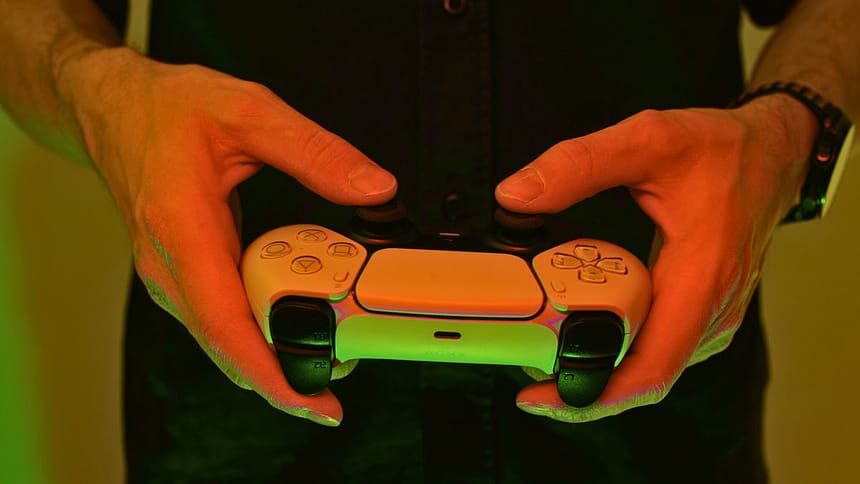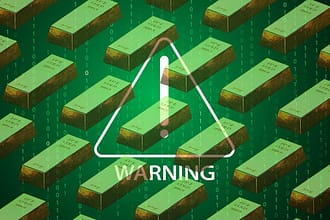It’s been a stressful time, full of concern about how much goods will cost in the months ahead — particularly tech.
Amid the Trump administration’s tariffs and now a “reciprocal tariff” pause, you might’ve gotten whiplash trying to keep up. But if you’re a gamer, an unfortunate truth emerges from the cacophony of news: Regardless of what the situation with tariffs might be, you can expect to pay more for your hobby.
TAX SOFTWARE DEALS OF THE WEEK
Deals are selected by the CNET Group commerce team, and may be unrelated to this article.
Nintendo announced the Switch 2 console last week, and some of its games are priced higher than people are accustomed to: $80 for digital and $90 for physical. However, should a price increase truly be unexpected?
Like most gamers, I wasn’t exactly thrilled by those price tags. But I was paying $50 for PlayStation 1 and 2 games nearly two decades ago. Current generation games cost about $70. That’s only a $20 increase over 20 years. What other tech product has had that kind of price stagnation?
Tariffs will likely increase the hardware costs, but the games themselves might not be directly affected. But that doesn’t mean prices aren’t going up.
Brad Hendricks, CEO of Blind Squirrel Entertainment Inc., told me he hopes people realize developers and publishers aren’t raising prices to try to rip off consumers. “Having a $60 price point for 10 or 15 years is wonderful,” he said, “but the reality is, the cost of everything has gone up.”
Blind Squirrel Games is the studio behind BioShock: The Collection and has credits on major games like God of War 2018, Avowed and New World.
There are a lot of reasons why your games might soon cost you more. Let’s get into it.
Tariffs and video games: What’s going on?
I know the question on every gamer’s mind right now is, “Will Trump’s tariffs mean I’ll soon be spending more on games?” Well, yes and no.
Tariffs “will affect hardware, for sure,” Hendricks said. “So Nintendo will have to raise the price point, is my guess. That would be true for Xbox and PlayStation, as well as PCs or anything else that’s hardware related.”
So if the 145% tariff on China — where PlayStations and Xboxes are primarily manufactured — remains in place, you’ll end up paying more for these products.
But Nintendo moved Switch console production from China to Vietnam in 2019. And because reciprocal tariffs were paused for all countries aside from China, you might not see a significant increase in Switch 2 prices in the US — at least during the 90-day period of the pause. This may be why Nintendo opted to put preorders for its new console on hold in the US and China.
As for physical games, they’re made all over the place:
- Most are manufactured in Mexico, which was hit with a 25% tariff earlier this year.
- PlayStation 5 games are made in Austria, which is part of the European Union and at least temporarily subjected to only the baseline 10% tariff.
- Nintendo games are primarily manufactured in China, so the price of Switch 2 games could be more heavily affected by the tariffs.
Digital games, which don’t have any physical components to import from other countries, wouldn’t be affected by tariffs.
But Hendricks said tariffs or no, he wasn’t shocked at the news of a higher price point for Nintendo’s games. He thinks games across the board need to see a price increase to account for higher development costs.
“Before the whole tariff discussion popped up, there was a lot of talk in the industry: When are publishers going to start moving the needle forward?” he said.
Right now a new AAA game costs $70 before tax. Hendricks said that if gamers want to see the realistic graphics, innovative features and gameplay they’ve come to expect, they’ll need to be willing to show their support with their wallets.
It might not be what you want to hear, but game prices likely need to come up
When the Switch 2 was announced at its higher-than-expected price point — combined with higher prices for both physical and digital Switch games and a paid walk-through of Switch features — people reacted negatively. Understandably so.
No one wants to hear they’ll have to shell out more for their favorite pastime. Continuing inflation and recession fears have left us all a bit wary, and the back-and-forth on tariffs has sent the stock market on a roller-coaster ride.
On top of that, the federal minimum wage hasn’t seen an uptick since 2009, when it was bumped to $7.25 — which isn’t enough to live off of during these trying times, let alone have disposable income to spend on games. So, if being asked to pay more for games upsets you, it makes sense.
Yet at the same time, the cost of everything for everyone is going up. Including game developers.
There are three primary types of games:
- Indie games, which are solo or small-group efforts, made by developers who produce titles of modest scope that are released only digitally and may be minimally affected by tariffs.
- AA (double A) games, which are typically produced by smaller studios with midsize budgets.
- AAA (triple A) games, which are put out by your Ubisofts and Activisions — huge studios with the budgets to match.
Game development isn’t exactly an inexpensive industry.
Hendricks said that when it comes to developing triple-A games, the low end is likely in the $20 million to $60 million range, not including marketing and whatnot. “So,” he said, “if you have a $100 million budget, it’s typically going to cost — with [distribution], marketing and everything else — probably closer to $200 million.”
Hendricks said he’s a developer, not a publisher, so he doesn’t have all the information. But what he does have is more than 30 years of experience working in the industry, with unique insight into what goes into making a game and leading a studio, including hiring talent.
Creating a video game takes a team of artists, programmers, sound designers, QA testers, writers, actors and many more. Maintaining these teams in the US is getting more expensive.
“I think there needs to be a shift in consumer minds,” Hendricks said. “Because some of the best developers in the world right now are struggling.”
Video game publishers set the price for games, but Hendricks said they’re hesitant to raise prices for fear of backlash. The reality, though, is that if gamers want to keep experiencing groundbreaking, innovative stories, they’ll have to be ready to support the studios making them.
So when are game prices likely to increase?
Aside from Nintendo, no other publisher has announced a price increase. But that’s likely going to change once Grand Theft Auto 6 comes out.
“Everybody is holding their breath right now: ‘What is GTA going to do?'” Hendricks said. The title’s developer, Rockstar Games, has “little to nothing to lose to go more expensive, because everyone’s going to buy it regardless of the cost.”
GTA 5, released in September 2013, is one of the best-selling video games of all time. As of February 2025, it’s sold 210 million copies, according to Statista.
With the Nintendo Switch 2 expected to come out on June 5, and GTA 6 slated for this fall, a price increase for games across the board is very likely to come soon after these two major releases.
Hendricks said that if Rockstar prices its game at $129, $179 or even $200 — as predicted — it’ll pave the way for other publishers to do the same.
How can you afford to be a gamer in 2025 and beyond?
Budgeting for hobbies isn’t always the easiest thing, especially if you’re into something as expensive as gaming. I know I’ll still be buying games even if they go up. Heck, I’ll probably pick up GTA 6 when it arrives — as long as it’s not $200, anyway.
If anything, a price hike will make me more intentional about the games I do purchase. I won’t be able to buy every major title as soon as it comes out, but I will pick up the games at some point when I have the money to burn.
As it stands, I tend to use my credit card points to cut back on gaming costs, with the caveat that I’ll never go into credit card debt just to buy the latest game. For instance, I used my card rewards to cover the cost of Assassin’s Creed: Shadows, as well as Avowed and Kingdom Come Deliverance 2.
Each title was released at $70, so it took me a fair amount of time to save the points, but it was worth it. Knowing what games you want to buy makes it easier to plan ahead for the expense.
I use the Blue Cash Preferred® Card from American Express for essential spending like gas and groceries, the Chase Sapphire Preferred® Card* for dining and travel purchases, and the Wells Fargo Active Cash® Card* for everything else. If I want a game that I can’t cover with points, I’ll slow down on eating out and other frivolous types of spending to make room for it.
I also try not to get swept up in FOMO. The three games above are easily over 60 to 70 hours of content. Once I’ve worked through those, I’ll think about picking up the next title on my list — which will likely be Doom: The Dark Ages after it arrives next month.
There are other ways to find room in your budget for your hobbies, too:
- Create a sinking fund for your next game purchase.
- Add gaming as an item in your budget so you know how much you need to save or can spend.
- Save on games by buying used, or trade in old consoles and games you don’t use for store credit. It may not feel great trading in things you spent good money on for a lower price, but if they’re sitting around collecting dust and you’re not holding on to them for sentimental reasons and they’re not part of a collection, it can help to limit your costs.
*All information about the Chase Sapphire Preferred and the Wells Fargo Active Cash Card has been collected independently by CNET and has not been reviewed by the issuer.






